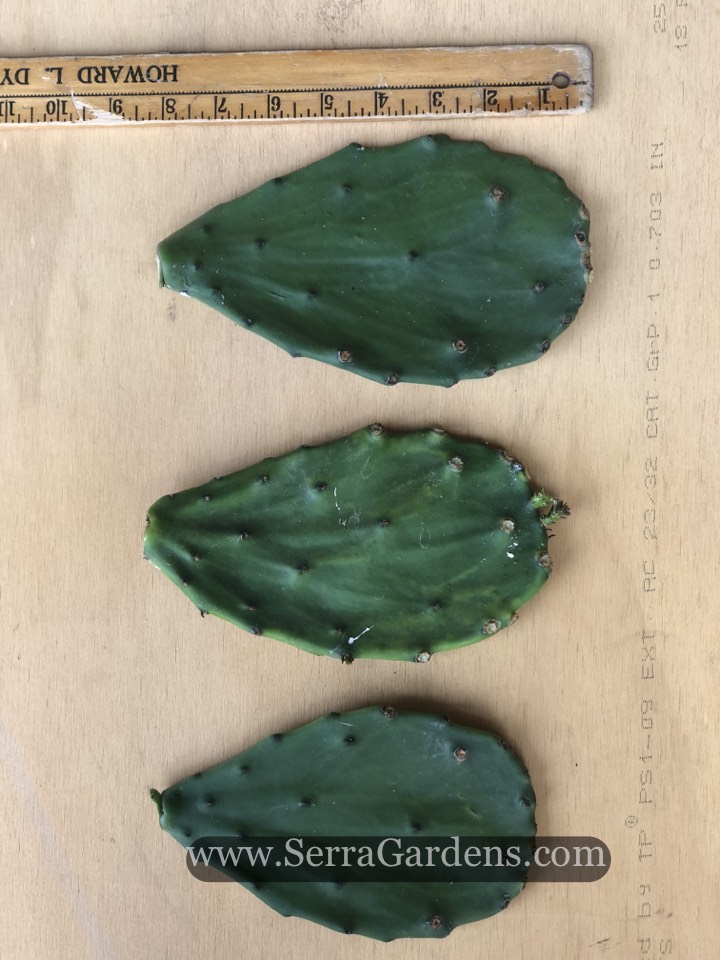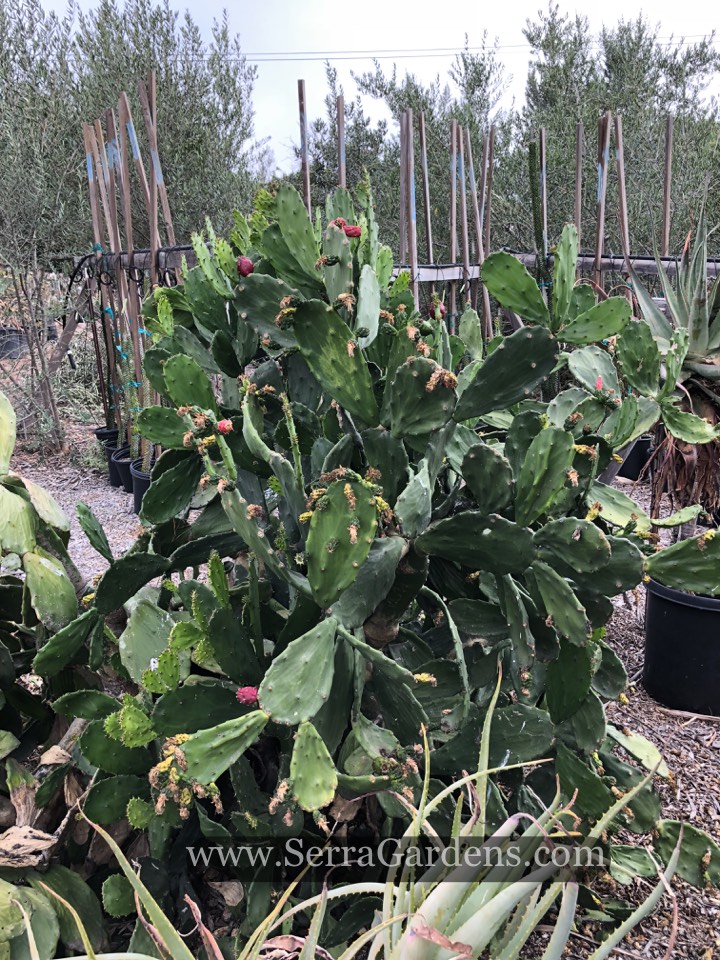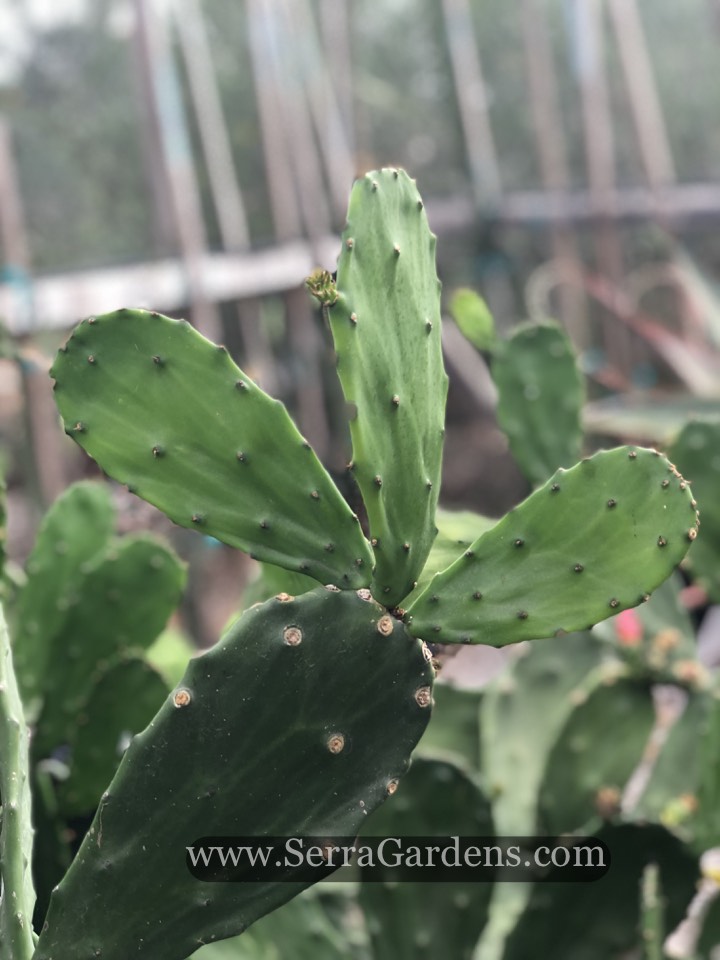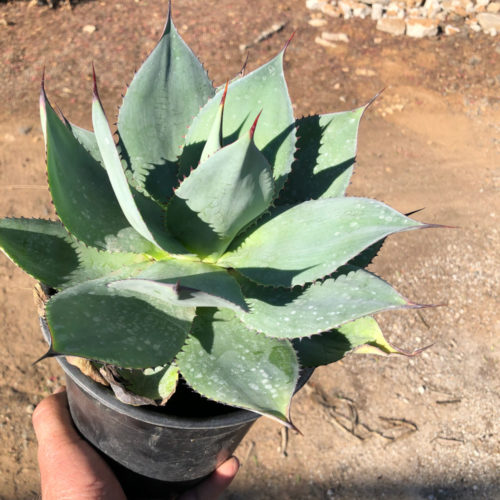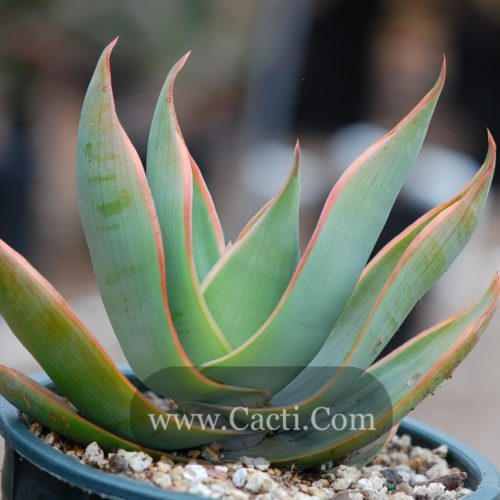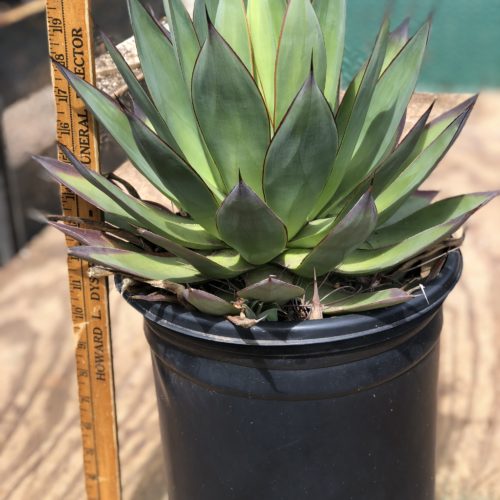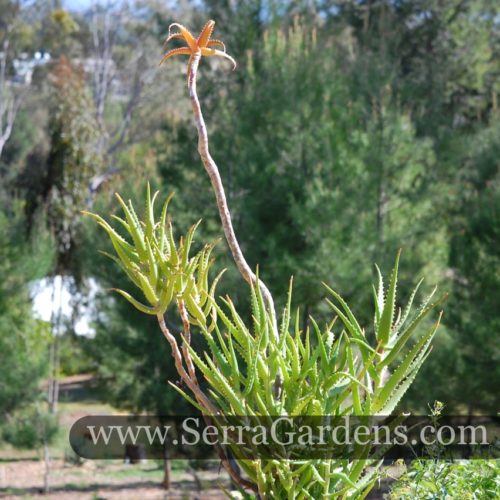Nopalea cochenillifera cuttings – A premium drought tolerant edible.
Horticultural Data | Shipping & Availability | Top
Nopalea cochenillifera ‘King’ makes an interesting tree cactus in larger cactus gardens. Use in xeriscape plantings as a hedge plant for arid regions. Keep it well pruned if kept as a container plant. This plant is endemic to Mexico where it grows in tropical dry forests. Carl Linnaeus first described Optunia cochenillifera as Cactus cochenillifer.
Nopalea cochenillifera is an evergreen cactus that is very easy to grow. It can become an interesting large shrub or small tree over time. It has a typical Opuntia form growing from pad-shaped stems but over time it will form an upright trunk with branches of green pads. Plant breeders have eliminated many of the annoying glochids through centuries of cultivation. Hummingbirds really favor their fuchsia and pink flowers appearing in summer. An edible red fruit follows the flowers.
For centuries indiginous peoples have grown Nopalea cochenillifera as a host plant for cochineal insects (Dactylopius coccus) – which were made into a red dye called cochineal. The cochineal industry is of ancient origin. The Spaniards found it well established when they conquered Mexico in 1518, and began at once to export as much as possible to Spain. During the early colonial days it was one of the chief articles of tribute to the crown. Cultivators placed cochineal insects on the joints or branches of the cactus where they rapidly multiplied and in about four months were collected by brushing them off into baskets. Cultivators then dried the cochineal scales which then became the “cochineal” of commerce. Two or three such collections were made each year. Synthetic dyes have largely replaced cochineal, but recent demand for natural dyes has revived interest.
Practioners of traditional medicine have used Nopalea cochenillifera extensively using flattened stem sections as poultices to treat mycoses (fungal skin infections) and fevers. Practioners also also slice roasted branches and apply as a poultice to relieve pain and swelling. Also the grated stem, mixed with corn meal and soft grease, is warmed for external application to relieve heavy chest colds and pneumonia.
Nopalea cochenillifera is An Excellent Food Plant!
South Americans will often use the pads as cattle fodder during times of stress. But the’re not just cattle fodder! Culinary experts from around the world have recognized this plant as a premium edible prized for its lemony tasting tender young pads and its many health benefits. also the glochids which are the tiny little spines emanating from the areole are few in number making it easy to clean. Here’s how to prepare them…
1) Hold the pad under running water with some rubber gloves at the kitchen sink.
2) Scrape off the areole and glochids with a knife.
3) Coat with garlic oil and roast on barbecue.
There are many recipes.
Horticultural Data
Description | Horticultural Data | Shipping & Availability | Top
Names and Synonyms: Nopalea cochenillifera, Optunia cochenillifer, Nopalea nuda, Optunia nuda, Cactus cochenillifera, Cactus splendidus, Cactus campechianus, Nopalea coccifera
Common Names: Prickly Pear, Cochineal Nopal Cactus, Cochineal Optunia, Velvet Opuntia, Wooly Joint Prickly Pear
Family: Cactaceae
Origin: This plant is endemic to Mexico where it grows in tropical dry forests. It was first described by Carl Linnaeus as Cactus cochenillifer.
Size Label: Set of three cuttings or cladodes.
Height: 10-15′
Width: 5-10′
Cold Tolerance: 20 to 25°F, -6.7 to -3.9°C
Heat Tolerance: Very high heat tolerance.
Light Requirement: Full sun to partial sun. Plants started in lower light levels should be acclimated to full sun to avoid sunburn.
Water needs: Drought tolerant. Best with deep irrigation every two weeks or so and can take more frequent watering in quick draining soils. It may require more frequent watering in a container.
Maintenance: Prune to shape as desired.
Uses: N. cochenillifera makes an interesting tree cactus in larger cactus and xeriscape plantings. It is used as a hedge plant in arid regions. It can be kept in a container if pruned.
Propagation: This plant can be grown from seed or more easily from stem cuttings which should be allowed to callus over before planting. Seeds should be fermented before sowing.
Problems: Cochineal beetles favor this plant.
Research Links:
http://davesgarden.com/guides/pf/go/60167/
http://tropical.theferns.info/viewtropical.php?id=Opuntia+cochenillifera
http://www.llifle.com/Encyclopedia/CACTI/Family/Cactaceae/28400/Nopalea_cochenillifera
Shipping & Availability
Description | Horticultural Data | Shipping & Availability | Top
There is a minimum purchase of any 4 plants for online orders. All plants shipped bare root. Other sizes may be available for pick up from our growing grounds in Fallbrook, CA. For more information, give us a call at 760-990-4762.
Click here for complete Price List.
